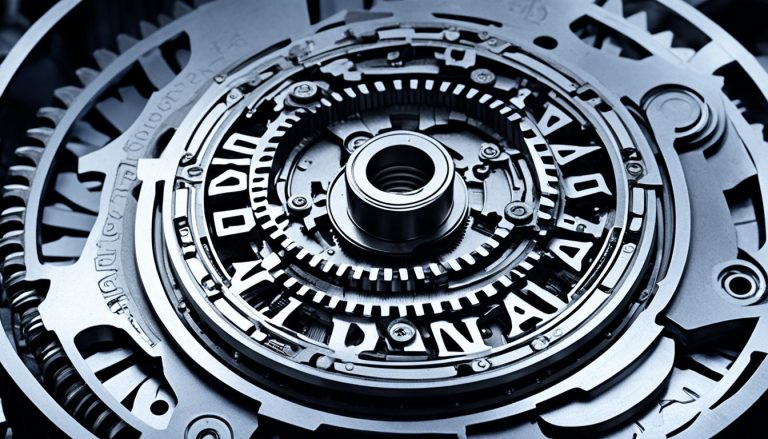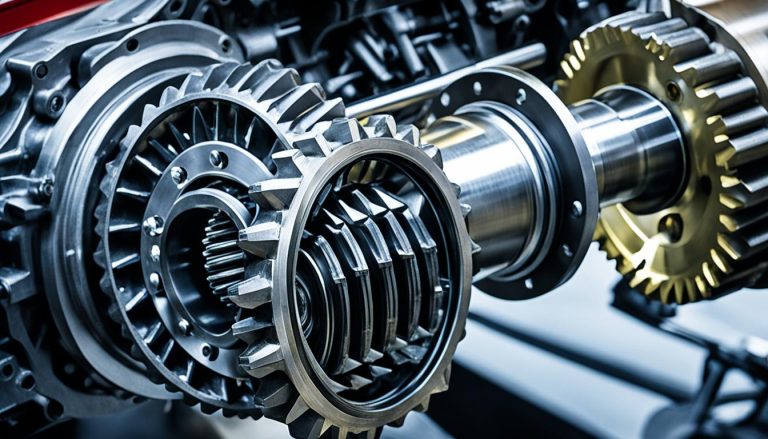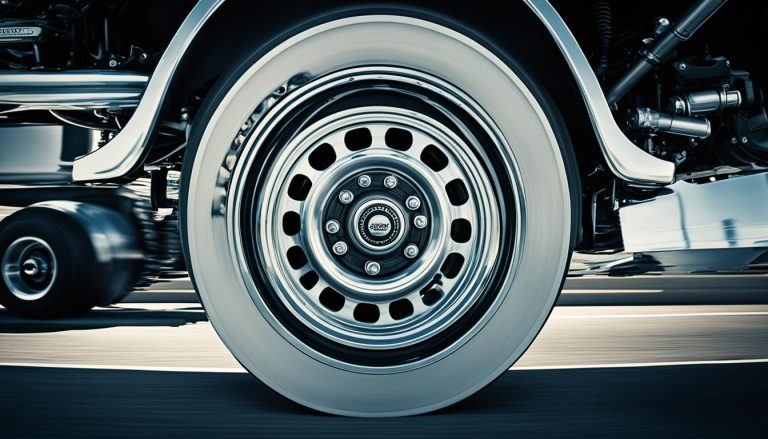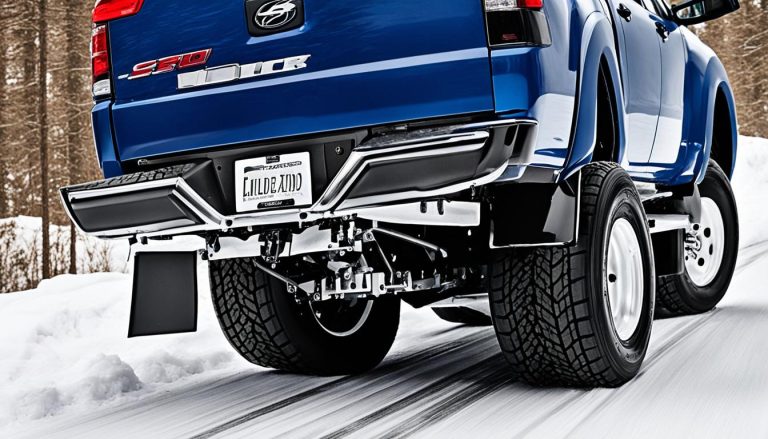Troubleshooting Mustang Mach 1 Limited Slip Differential
If you’re a proud Mustang Mach 1 owner, you’ve experienced the thrill of its performance on the road. However, encountering limited slip differential problems with your Mustang Mach 1 can quickly dampen your driving spirit. It’s not uncommon for some spirited activities like burnouts or donuts to push your Mach 1 to the limits, potentially leading to drivetrain complications. You may have noticed that occasional stutter or hesitance when your steed starts from a standstill – often a telltale sign of a problematic clutch pack in your differential. But don’t worry, Mustang Mach 1 differential troubleshooting is within your grasp, and this guide is here to help steer you in the right direction for a swift Mustang Mach 1 limited slip differential repair.
First, let’s start with a simple diagnostic you can perform. With one wheel lifted, give it a manual spin. Does the opposite wheel rotate in sync? If not, it’s likely your limited slip differential isn’t synchronizing the wheel movements as it should. From forum discussions to mechanic’s bays, solutions for these ailments range widely. Some suggest the addition of a limited slip additive, while others advise a full differential replacement with robust aftermarket alternatives.
Key Takeaways
- Performing a manual spin test can help diagnose limited slip differential problems in your Mustang Mach 1.
- Typical symptoms of concern include stuttering or hesitance of the wheels upon starting.
- Adding a limited slip additive could be a temp fix for clutch pack issues within the differential.
- Consider aftermarket solutions such as “Detroit Tru Trak” for a more permanent repair.
- Attempting to replace clutch packs on your own may lead to voided warranties if not done with expertise.
Understanding Your Mustang Mach 1’s Limited Slip Differential
If you’re behind the wheel of a Mustang Mach 1, you know you’ve got a powerful beast on your hands. Nonetheless, no matter how thrilling the ride, it becomes doubly important to understand the mechanisms that allow you to harness this power efficiently. One such critical component is the Mustang Mach 1 limited slip differential (LSD). Unlike a standard open differential, the LSD in your Mach 1 is designed to maximize traction by distributing power to both wheels, while still allowing them to rotate at different speeds when necessary — a feature particularly useful in cornering.
How does this component work, and what might be the source of limited slip differential issues in your Mustang Mach 1? Let’s delve in. The LSD’s capabilities are anchored by the clutch packs that engage and distribute torque evenly to prevent wheel slip in straight-line acceleration and provide differential wheel speeds when cornering. The efficacy of this system, however, is contingent upon the health of these clutch packs, which are subject to wear and tear, especially under aggressive driving conditions.
| Component | Function | Common Issues |
|---|---|---|
| Clutch Packs | Distribute torque evenly to both wheels | Wear due to aggressive driving, leading to reduced traction |
| Friction Discs | Allow wheels to spin at the same rate, engage during cornering | Wear affects cornering stability and differential responsiveness |
Ignoring the signs of wear or damage in your LSD can exacerbate limited slip differential issues in your Mustang Mach 1, potentially leading to a more serious and costly repair down the line. It’s essential to pay attention to how your vehicle handles and listen for telltale noises that suggest your differential is in need of some TLC. Understanding the role of these components isn’t just about car smarts; it’s about preserving the integrity of your drive and the legacy of performance that is Mustang Mach 1.
Apprehensive about addressing these issues yourself? It’s always wise to consult a professional or take your vehicle to a certified Ford service center where technicians can diagnose and rectify any LSD problems with precision and care. Remember, the limited slip differential is not just any part; it’s the heart of your muscle car’s road-hugging prowess. Treat it well, and your Mustang Mach 1 will continue to deliver the power and performance that you’ve come to expect from such an iconic vehicle.
Recognizing Limited Slip Differential Problems in Your Mustang Mach 1
As a proud owner of the Mustang Mach 1, staying alert to the health of your car’s limited slip differential (LSD) is crucial for ensuring a smooth and powerful drive. Recognizing the early signs of differential problems can save you from future headaches and keep your Mach 1 in top racing condition. Let’s delve into the common indicators of LSD woes and what they could mean for your vehicle’s performance.
Signs of Differential Clutch Wear
If you’ve noticed a peculiar chatter coming from your Mustang’s undercarriage, it may be a symptom of differential clutch wear. This clutch chatter often manifests as a vibration or a series of noises when accelerating or making sharp turns. Your Mustang Mach 1 differential service should address this issue promptly to maintain the integrity of your vehicle’s performance and to bypass the compounding effect of wear on other important transmission components.
Identifying Differential Noises and Their Meanings
Mustang Mach 1 differential noise is not just an annoyance – it’s your car speaking to you about its condition. A groaning sound during cornering or a clanking when you reverse and turn might indicate that substantial stress has been placed on your LSD. Regular check-ups with a trusted mechanic, knowledgeable in Ford’s engineering, can help decipher these sounds and provide the necessary adjustments or repairs.
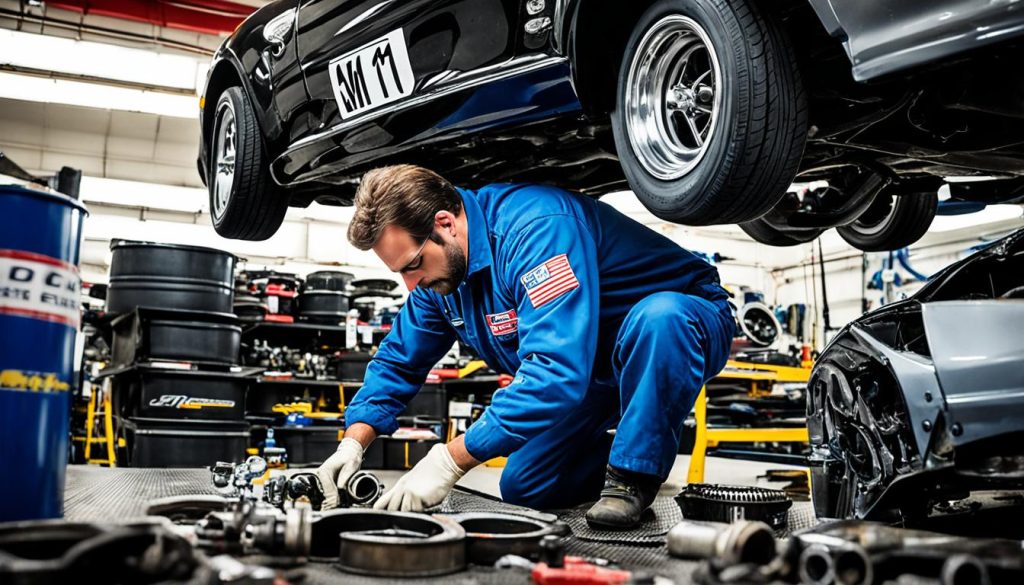
Detecting Rear End Stutter and Traction Issues
Sometimes, your traction control system (TCS) might lead you to believe there’s an LSD fault when it’s actually a sign of a malfunctioning TCS. However, if you experience rear end stutter or issues with traction on dry roads, it could point towards Mustang Mach 1 differential problems. Addressing these symptoms quickly could prevent more extensive damage, ensuring that your Mach 1 stands as a testament to performance and durability.
In summary, attentive care and timely maintenance of your Mustang Mach 1’s LSD can mean the difference between an exhilarating ride and a costly service. Keep an ear out for unusual noises, stay sensitive to changes in your car’s handling, and remember that routine checks are the best way to keep your Mach 1 roaring proudly on the road.
Common Causes of Mustang Mach 1 Limited Slip Differential Issues
If you’re a Mustang Mach 1 enthusiast, understanding how to maintain your car’s performance is essential. Specifically, the limited slip differential (LSD) is an integral part of your vehicle’s drivetrain that can suffer if not properly taken care of. Let’s dive into some of the prevalent reasons that can result in LSD issues and how regular maintenance can help mitigate them.
Impact of Aggressive Driving on Differential Health
Aggressive driving maneuvers, such as burnouts and fast launches, are not just exhilarating but risky as well. They can inflict significant wear and damage to the differential components of your Mustang Mach 1. Symptoms of this may include wheel hop or a stuttering sensation during acceleration. These issues arise because the clutch packs that facilitate power distribution between the wheels are strained under the aggressive torque.
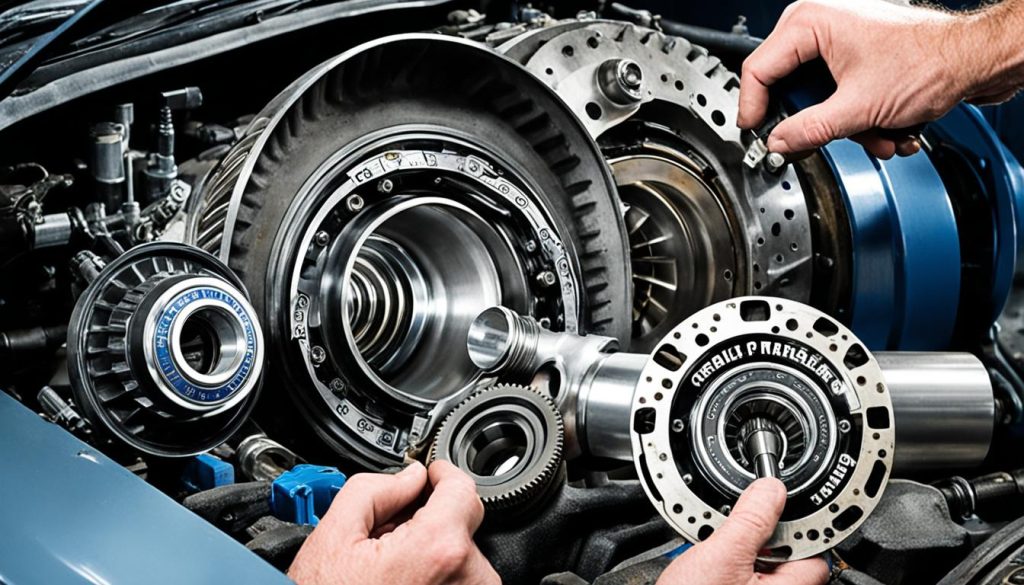
The Importance of Regular Differential Maintenance
Ignorance is not bliss when it comes to Mustang Mach 1 differential maintenance. Regular check-ups and fluid changes can keep limited slip differential problems at bay. Ensuring the appropriate additives are mixed with the differential fluid is crucial for the health of those clutch packs. Moreover, addressing the early signs of wear could save you from significant repair costs in the future. So, keep your Mustang Mach 1 roaring with pride by sticking to a disciplined maintenance schedule.
Don’t wait for limited slip differential problems to escalate. Preventative maintenance is key to preserving your Mustang Mach 1’s driving dynamics.
Limited Slip Differential Problems Mustang Mach 1: Troubleshooting Steps
If you’re facing Mustang Mach 1 limited slip differential problems, the journey to resolution beckons with methodical troubleshooting steps. Initially, a simple yet telling diagnostic test involves lifting one wheel off the ground—safety measures in place, of course—and then manually spinning it. Should the corresponding wheel on the opposite side rotate in harmony, you have an affirmative nod to your differential’s functionality. Nevertheless, the absence of this synchronized dance between the wheels might indicate deeper limited slip differential issues Mustang Mach 1 models often wrestle with.
Listening closely to your vehicle during various driving scenarios is equally revealing. For instance, unusual sounds such as grinds or groans while cornering can serve as a beacon, guiding you to identify the root cause of differential distress. Sometimes, you may be pointed to consider a full-on maintenance escalation. Picturesque drives marred by the cacophony of a disgruntled drivetrain could imply that a more comprehensive measure, such as clutch pack replacements or exploring potent aftermarket options like a Detroit Tru Trak, is on the horizon.
However, understanding whether the issue at hand is an occasional hiccup or a persistent thorn is crucial. There have been instances where Mustang Mach 1 differential troubleshooting begins, but the beast’s roar returns to normal without further ado, hinting at possible misdiagnoses. Therefore, monitoring for consistent patterns is essential to avoid unnecessary interventions. Keep in mind, your beloved Mach 1 deserves not only the thrill of the ride but also the due diligence of meticulous care to ensure those spirited journeys continue unhindered.
FAQ
How do I know if my Mustang Mach 1 is experiencing limited slip differential problems?
Some common symptoms include a stutter or hesitation in the wheels when starting from a stop, unusual noises like groaning during turns or gear whine, and clunking when reversing and turning. If you perform a test where you lift one tire and manually spin it, the opposite tire should rotate in unison. If it doesn’t, there may be an issue with the differential’s clutch packs or other components that require further inspection or repair.
What is the function of the limited slip differential in the Mustang Mach 1?
The limited slip differential (LSD) in your Mustang Mach 1 uses a set of clutch packs to distribute power between the wheels while allowing for differential wheel speeds during cornering. It helps ensure traction and control by engaging the clutch packs to spin both axles at the same rate under normal driving and allows for variation when taking turns.
What are the signs of differential clutch wear in the Mustang Mach 1?
Signs of clutch wear in the differential include clutch chatter, a stuttering sensation when accelerating from a stop, and an increase in noise during vehicle maneuvers. Significant noises or changes in the rear end behavior during cornering or reversing maneuvers can also indicate clutch wear within the LSD.
Can aggressive driving cause limited slip differential issues in the Mustang Mach 1?
Yes, aggressive driving maneuvers such as performing burnouts, donuts, and hard launches can significantly stress the differential and lead to premature wear or damage to the clutch packs and other drivetrain components. This can manifest as wheel hop, stuttering, or a loss of traction, signaling that your differential may need maintenance or repair.
How important is regular maintenance for preventing Mustang Mach 1 differential problems?
Regular maintenance, including routine checks and changes of the differential fluid, is critical in preventing limited slip differential problems. Ensuring that the correct additives are used and maintenance intervals are adhered to can help avoid premature deterioration of LSD clutches and other components, prolonging the lifespan of your differential.
What troubleshooting steps should I take if I suspect a limited slip differential issue in my Mustang Mach 1?
Begin by checking for the obvious signs of differential trouble, like unusual noises or behavior during specific driving conditions. For a simple diagnostic check, raise one wheel and observe whether the opposite wheel rotates in unison. If the issue persists, consider visiting a professional for a detailed inspection. In some cases, more complex repairs or replacements, such as installing new clutch packs or switching to an aftermarket differential like a Detroit Tru Trak, may be necessary.
Can I add an additive to my differential fluid to fix noise and stuttering issues?
While some Mustang Mach 1 owners report success in reducing noise or improving differential function by adding Ford’s Friction Modifier or similar additives to the differential fluid, others suggest that it could cause further slippage in the clutch packs. It’s best to consult your vehicle’s maintenance guide or a professional mechanic to determine the appropriate action for your specific situation.


